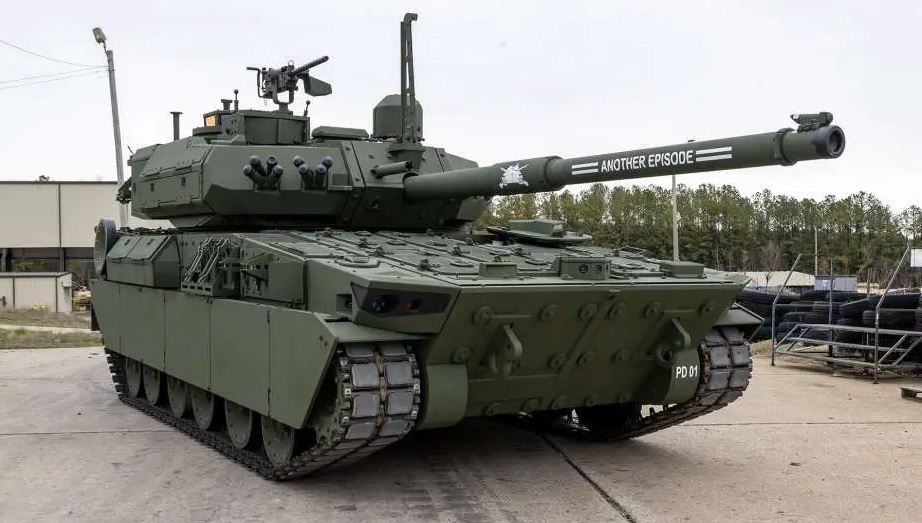GDLS Delivers First Batch of M10 Booker Combat Vehicles to U.S. Army

General Dynamics Land Systems has delivered the first batch of M10 Booker Combat Vehicles to the U.S. Army, enhancing Infantry Brigade Combat Teams with a versatile, technologically advanced assault vehicle designed for adaptability and effectiveness on the modern battlefield.
General Dynamics Land Systems (GDLS) has reached a significant milestone with the delivery of the first batch of M10 Booker Combat Vehicles to the U.S. Army. These vehicles are part of the Low-Rate Initial Production (LRIP) phase, aimed at supporting government testing and logistics efforts.
The M10 Booker is designed to be a versatile and robust assault vehicle, capable of quickly navigating various terrains. Its main mission is to engage and destroy enemy combatants, bunkers, machine gun positions, fortifications, and armored combat vehicles. With a four-person crew, it's equipped with advanced technology like an enhanced thermal viewer and a large-caliber cannon. Its lightweight hull and turret, alongside a modern diesel engine, transmission, and suspension system, contribute to its agility and effectiveness on the battlefield.
A notable feature of the M10 Booker is its adaptable design, allowing for future upgrades to meet evolving operational needs. This forward-thinking approach ensures the vehicle can remain relevant amidst changing threats and technological advancements.
Gordon Stein, General Dynamics Land Systems vice president and general manager for U.S. operations, expressed pride in delivering these vehicles to the Army. He highlighted that the latest Bookers incorporate improvements and lessons learned from the Middle Tier Acquisition phase, ensuring they meet the needs of soldiers effectively.
The introduction of the M10 Booker is expected to significantly enhance the capabilities of Infantry Brigade Combat Teams (IBCTs), providing them with a powerful tool to address various combat scenarios. As the Army continues to modernize, the M10 Booker becomes a crucial component in maintaining military superiority for the United States.
General Dynamics Land Systems remains committed to supporting the U.S. Army through continuous innovation and excellence in military vehicle design and production. The delivery of the M10 Booker vehicles signifies the start of a new chapter in U.S. Army operations, promising increased effectiveness and resilience in future combat engagements.
About M10 Booker Combat Vehicle
The M10 Booker is a new armored fighting vehicle named after two American soldiers for the U.S. Army. It is designed to provide fire support for infantry troops on the move. Here are some of its specifications:
- Classification: Light tank (according to some military officials and defense media) or assault gun (according to U.S. Army)
- Mass: 38–42 tonnes (37–41 long tons; 42–46 short tons)
- Main armament: 1 × 105 mm M35 tank gun
- Secondary armament: 1 × 12.7 mm M2HB heavy machine gun, 1 × 7.62 mm M240B machine gun
- Engine: Diesel MTU 8V199 TE23 15.9 L, 1,070 hp (800 kW)
- Maximum speed: 70 km/h (43 mph)
- Operational range: over 550 km (342 mi)
- Crew: 4
The M10 Booker features a 105mm cannon that can fire a variety of rounds, including armor-piercing discarding sabot (APDS) and high-explosive (HE) rounds. It also has a 7.62mm coaxial machine gun and a 12.7mm heavy machine gun. The vehicle is well-protected with add-on armor panels and under-vehicle IED protection. It also has a proven ammunition compartmentalization system for crew safety.
The M10 Booker is a highly mobile vehicle thanks to its high power-to-weight ratio and hydro-pneumatic suspension. This allows it to keep up with infantry troops and maneuver quickly over rough terrain. The vehicle is also designed to be transportable by air, which makes it easy to deploy to wherever it is needed.
The M10 Booker is a significant addition to the U.S. Army's arsenal. It provides much-needed firepower and protection for infantry troops on the battlefield.



